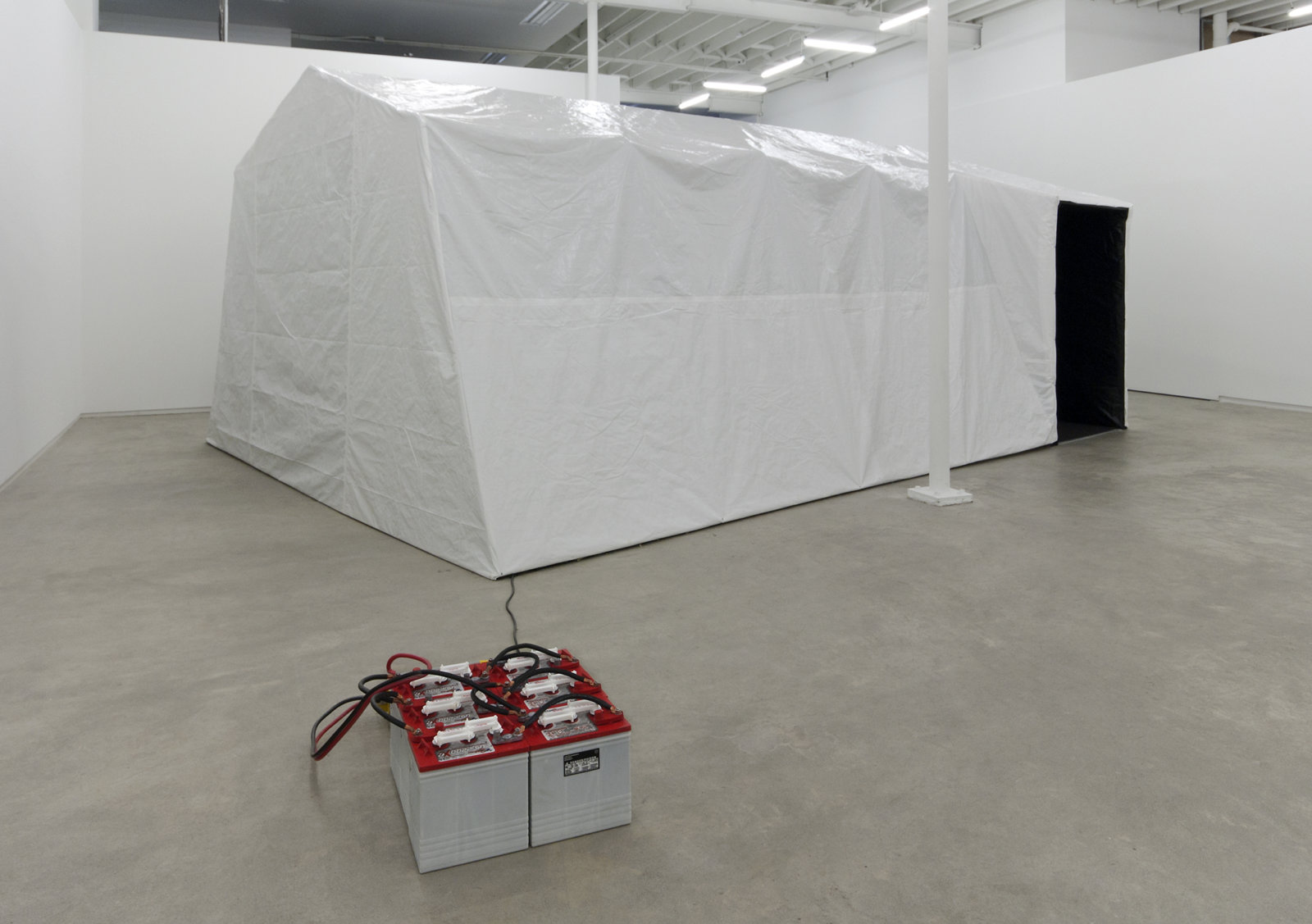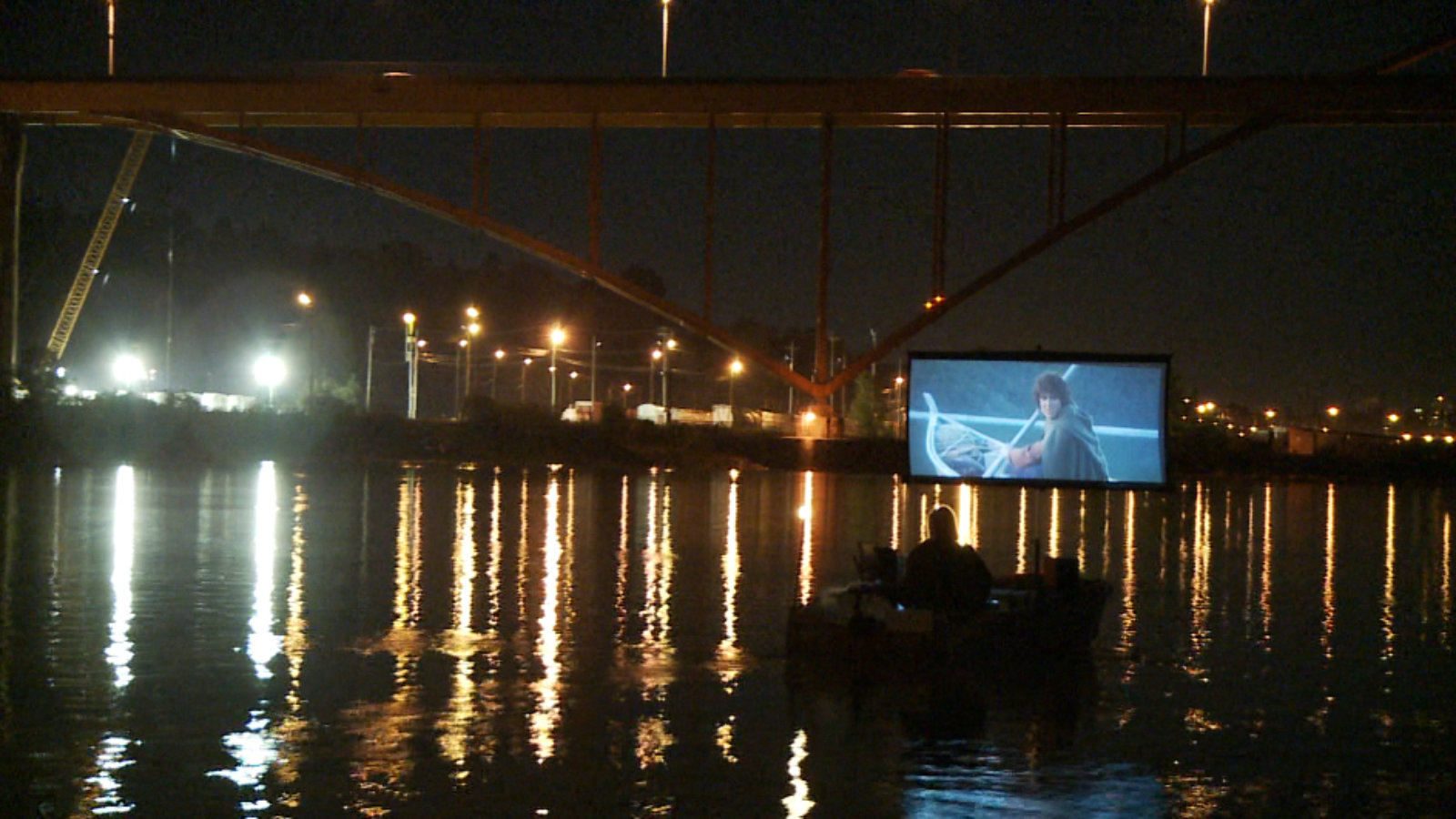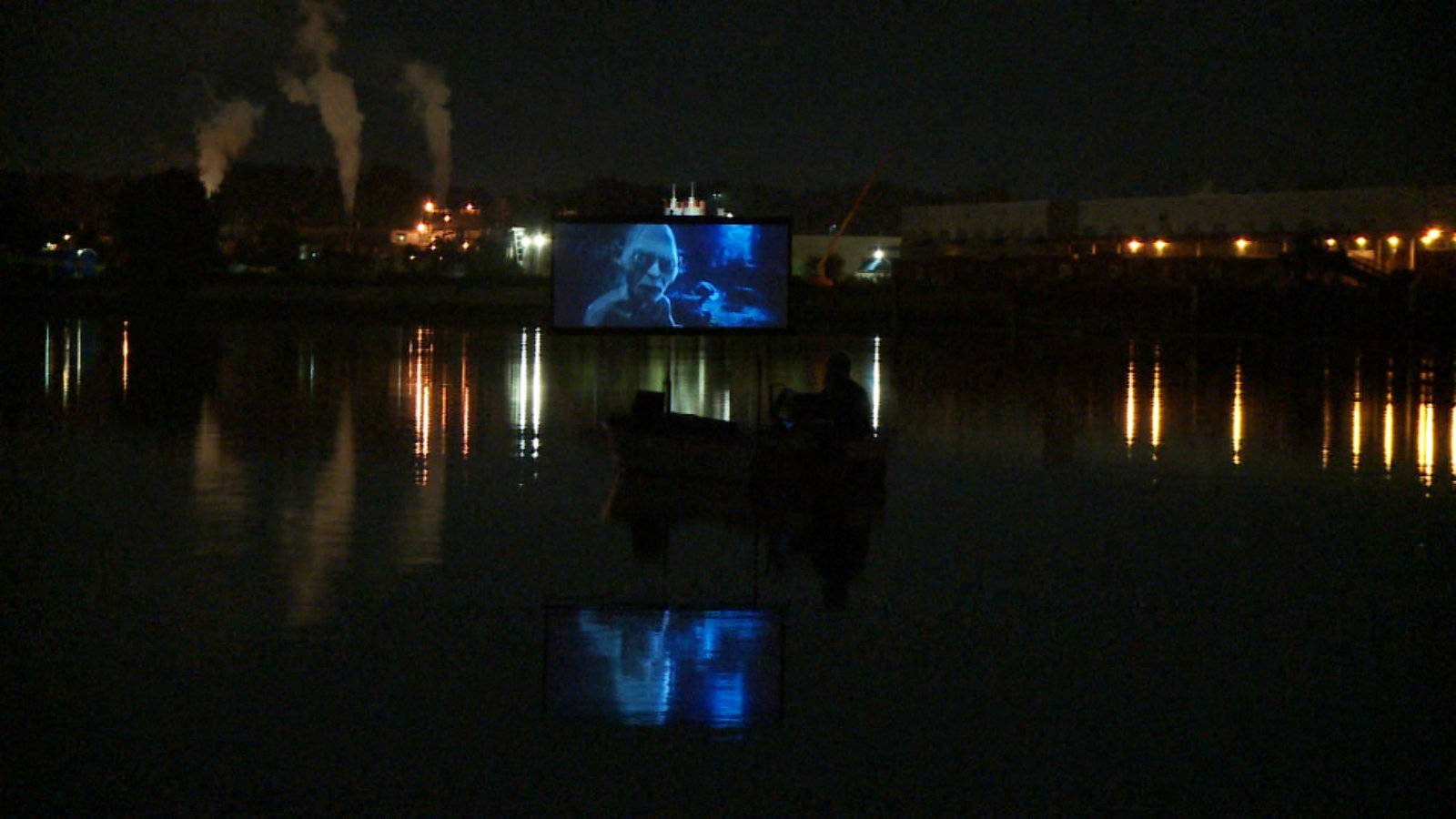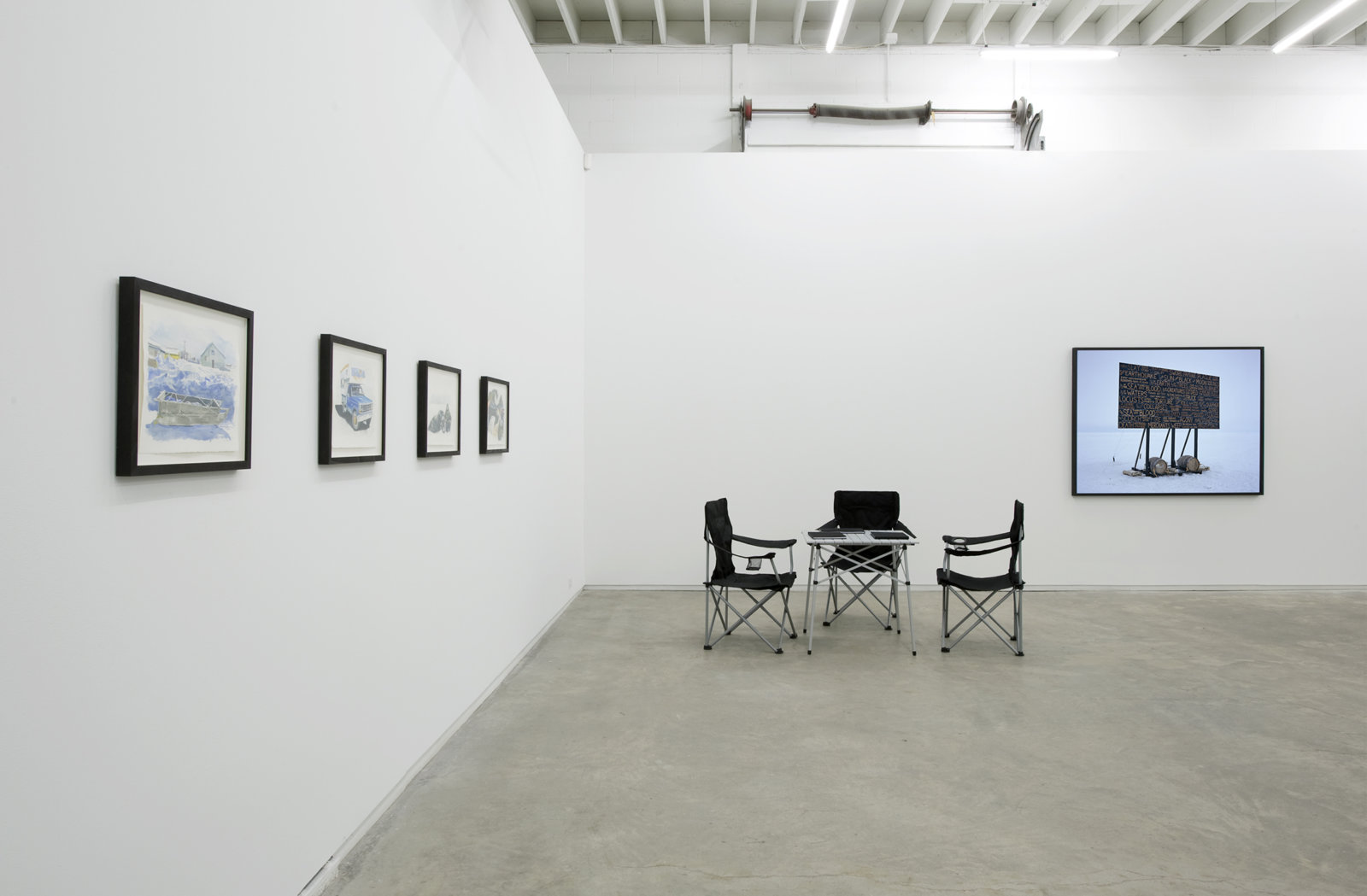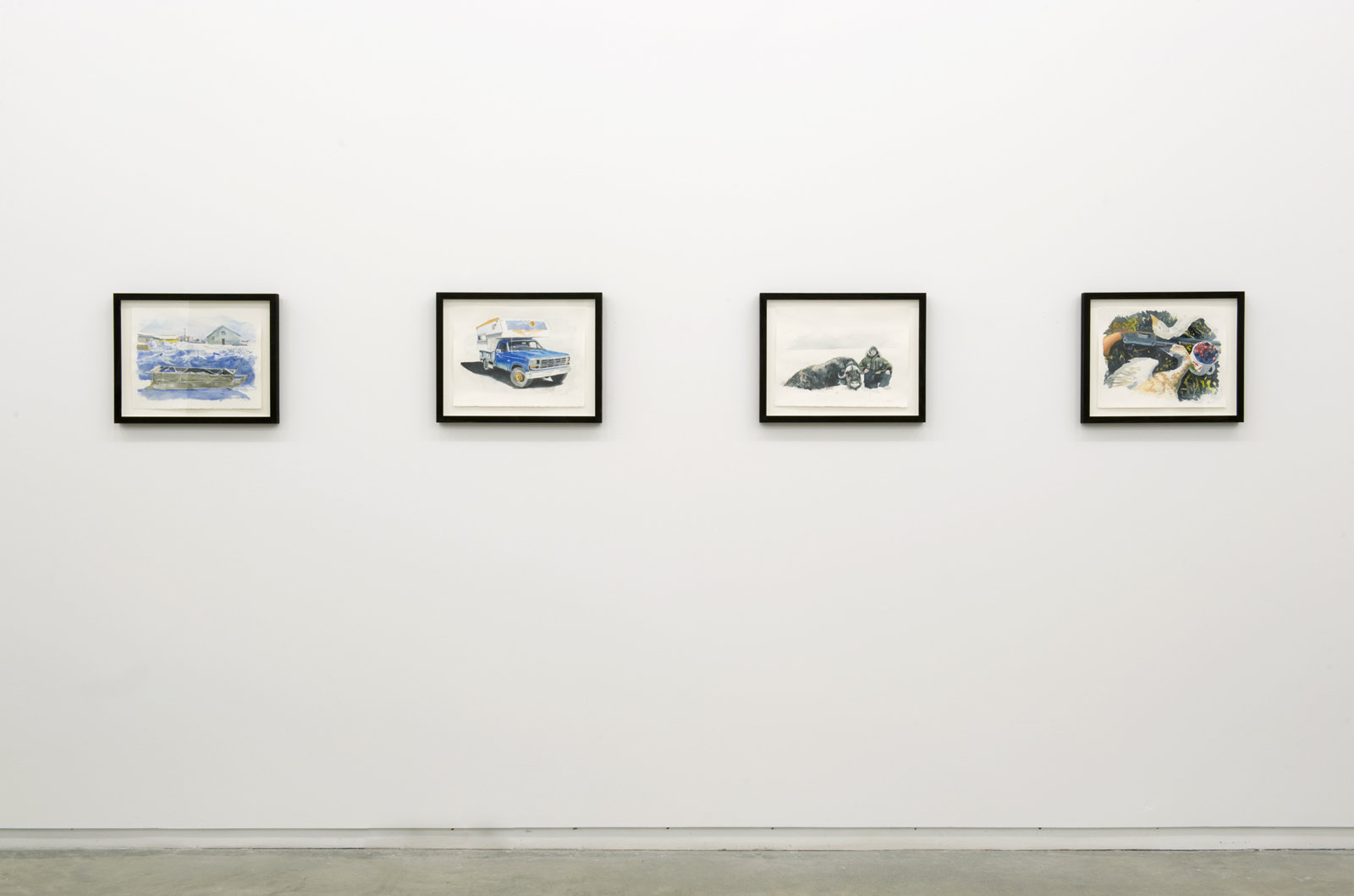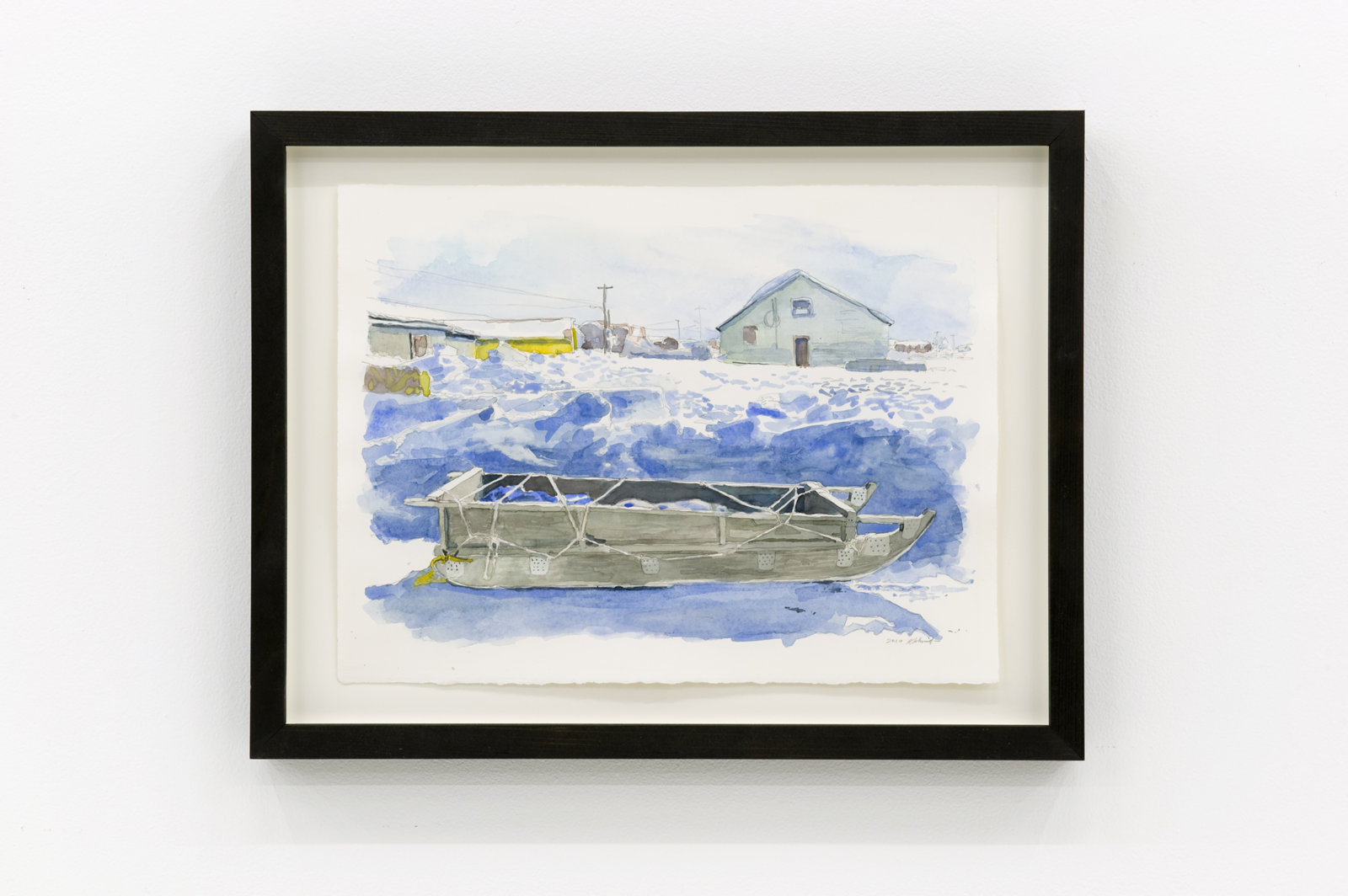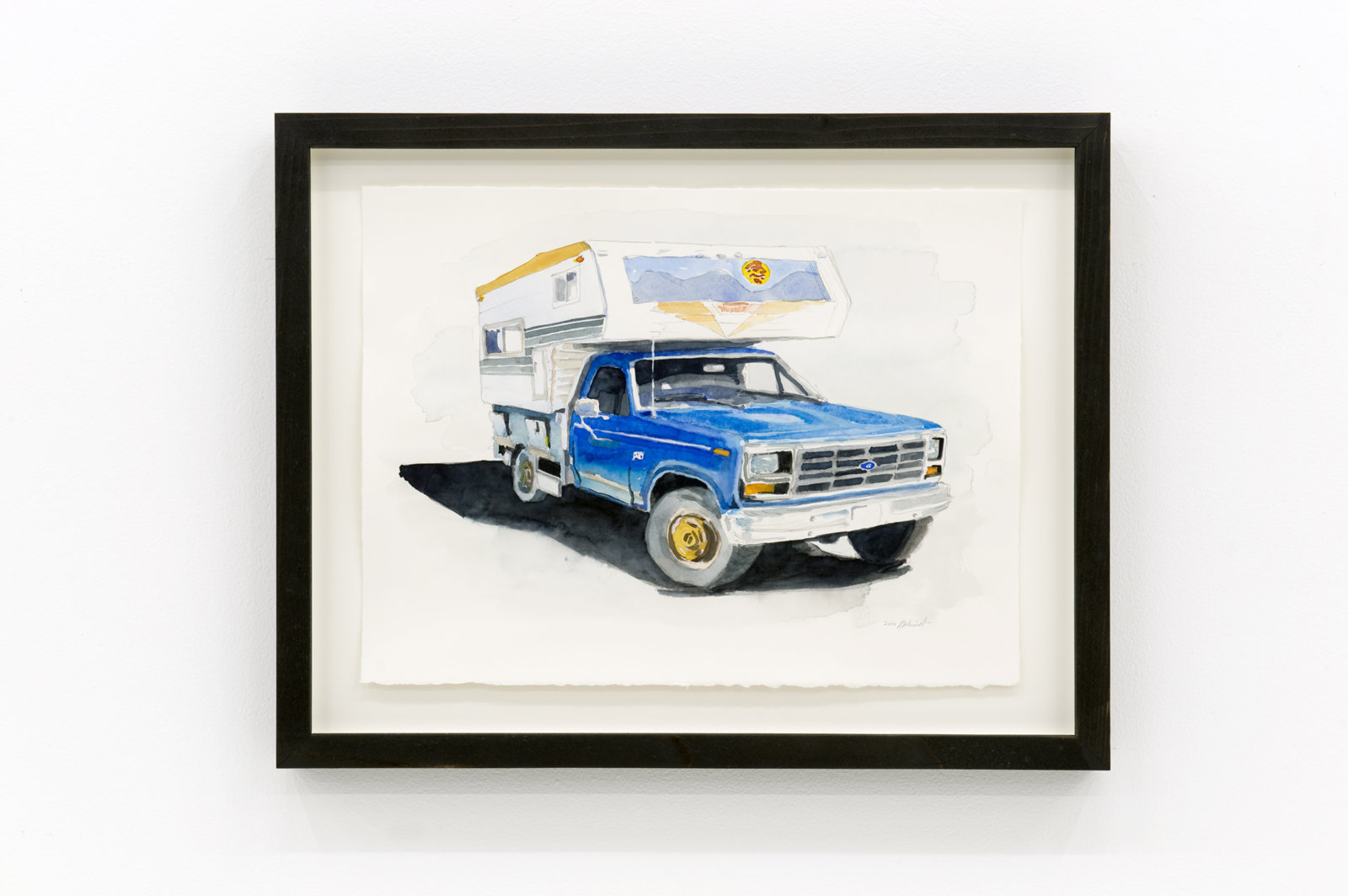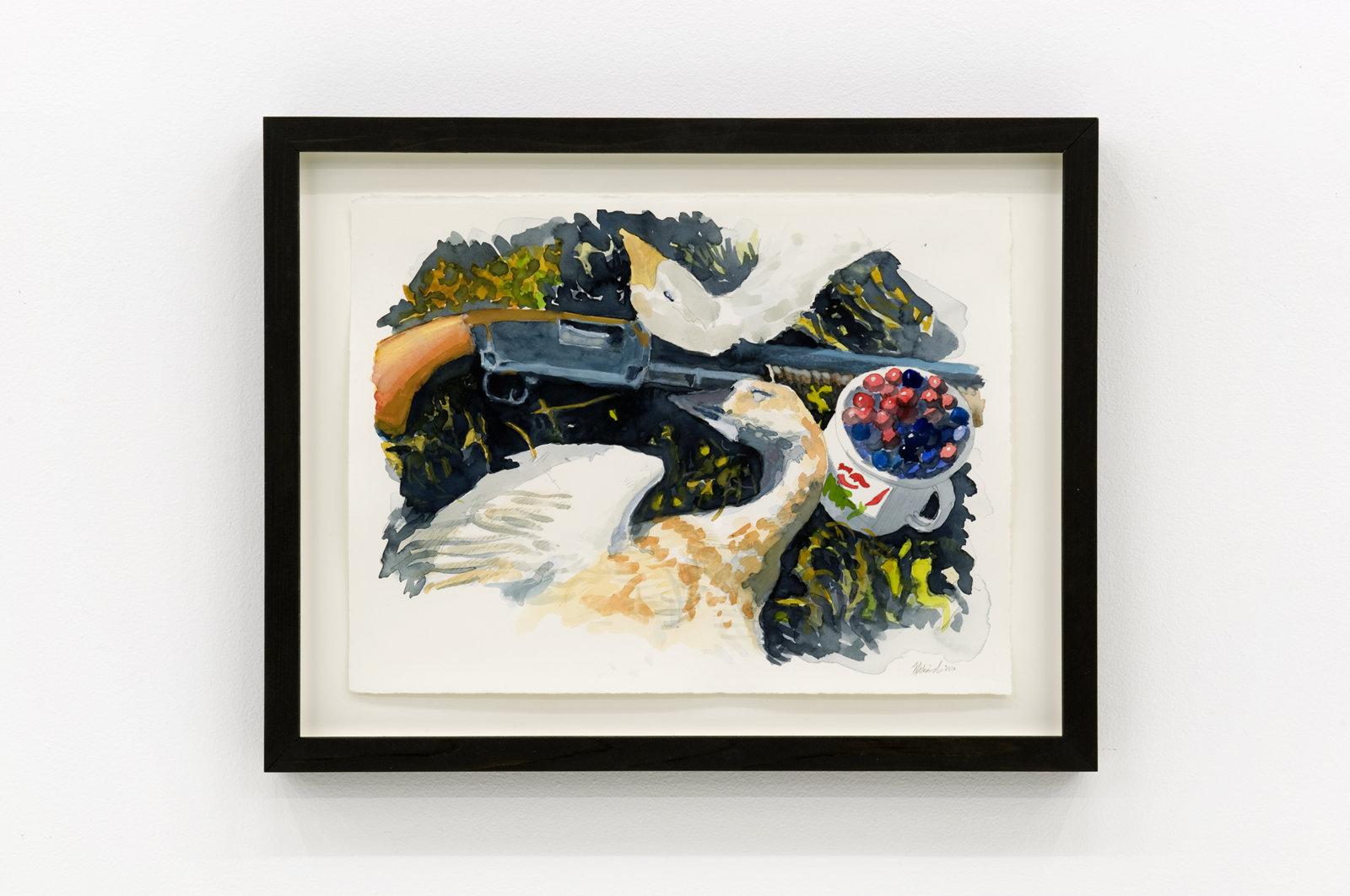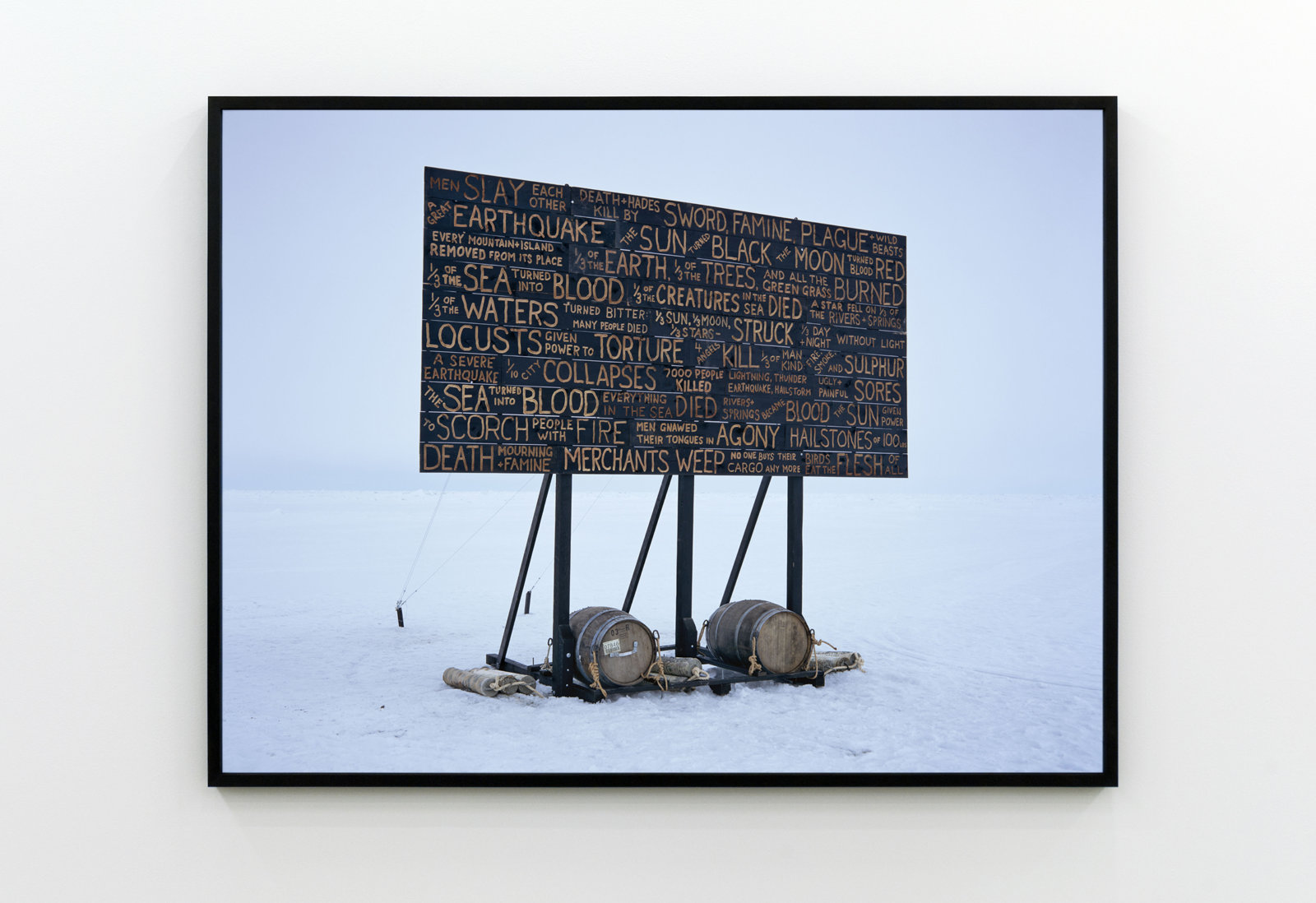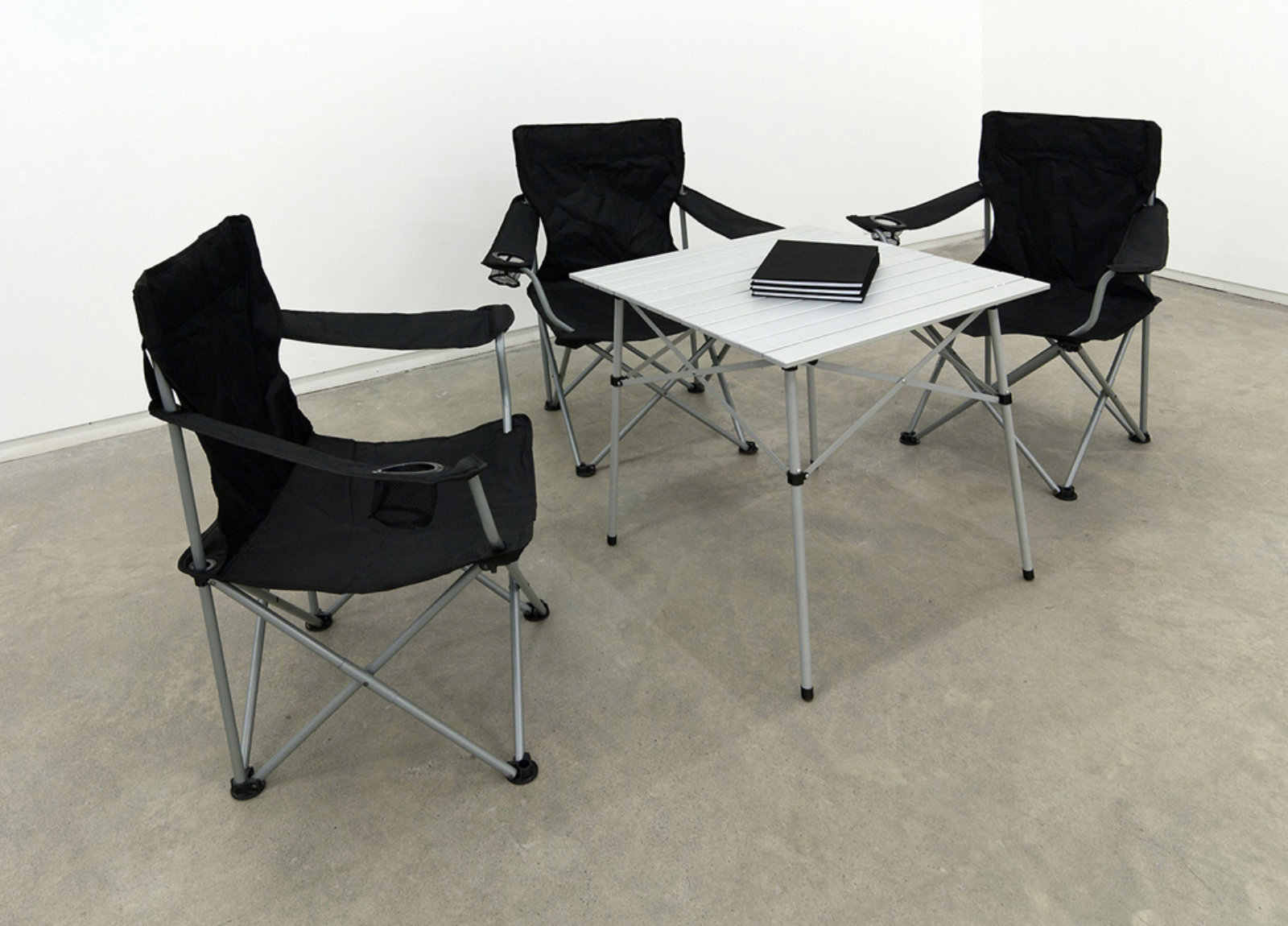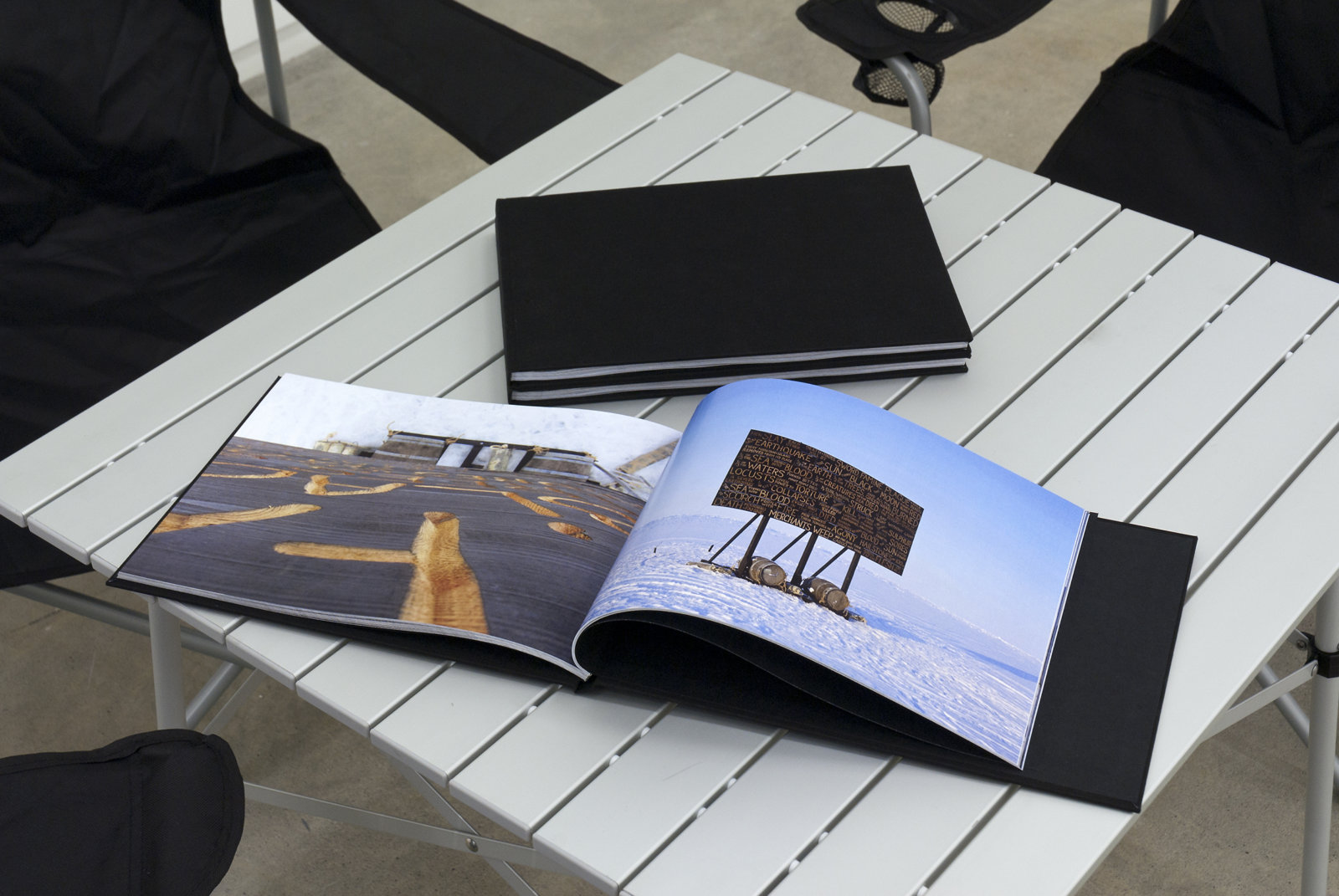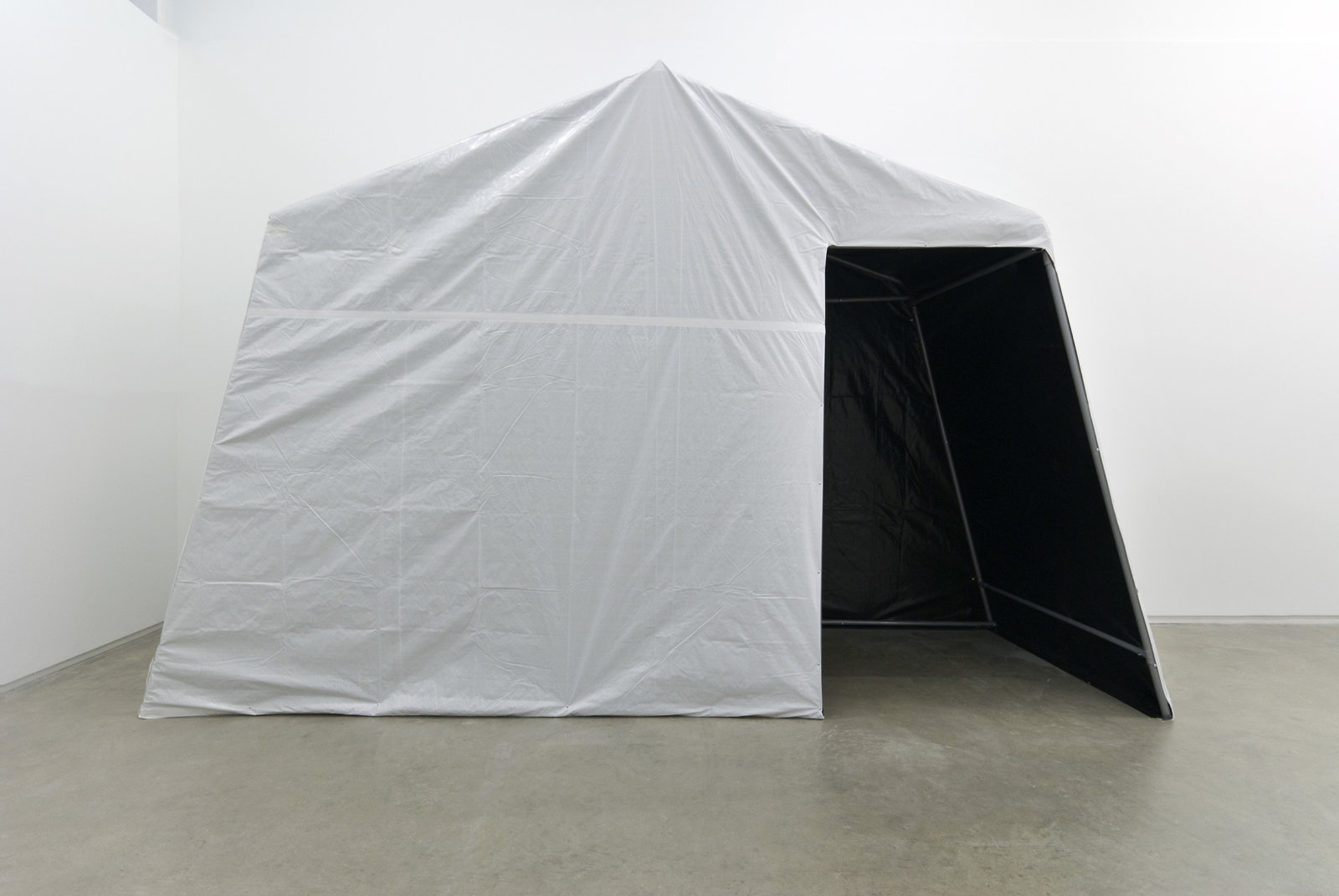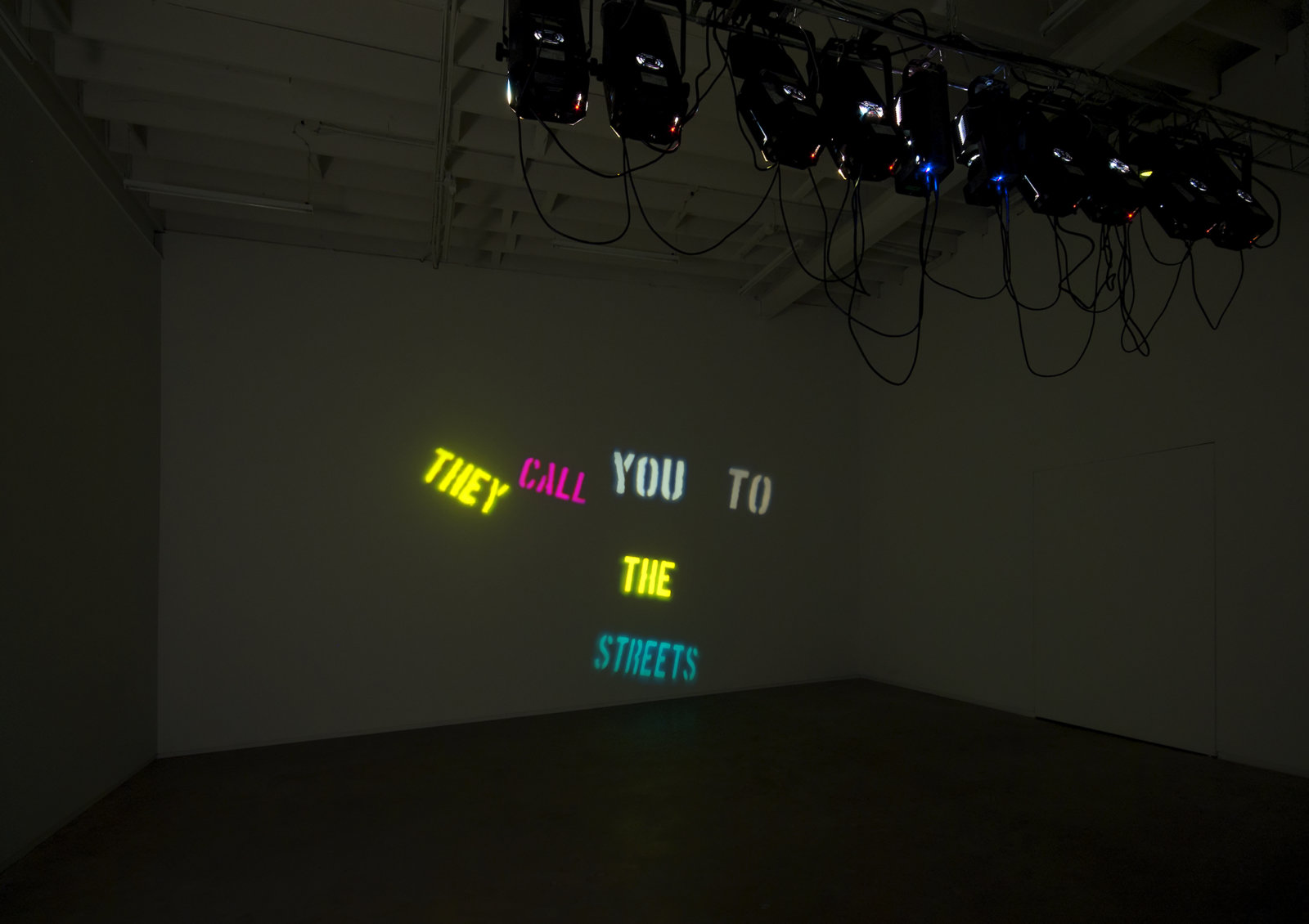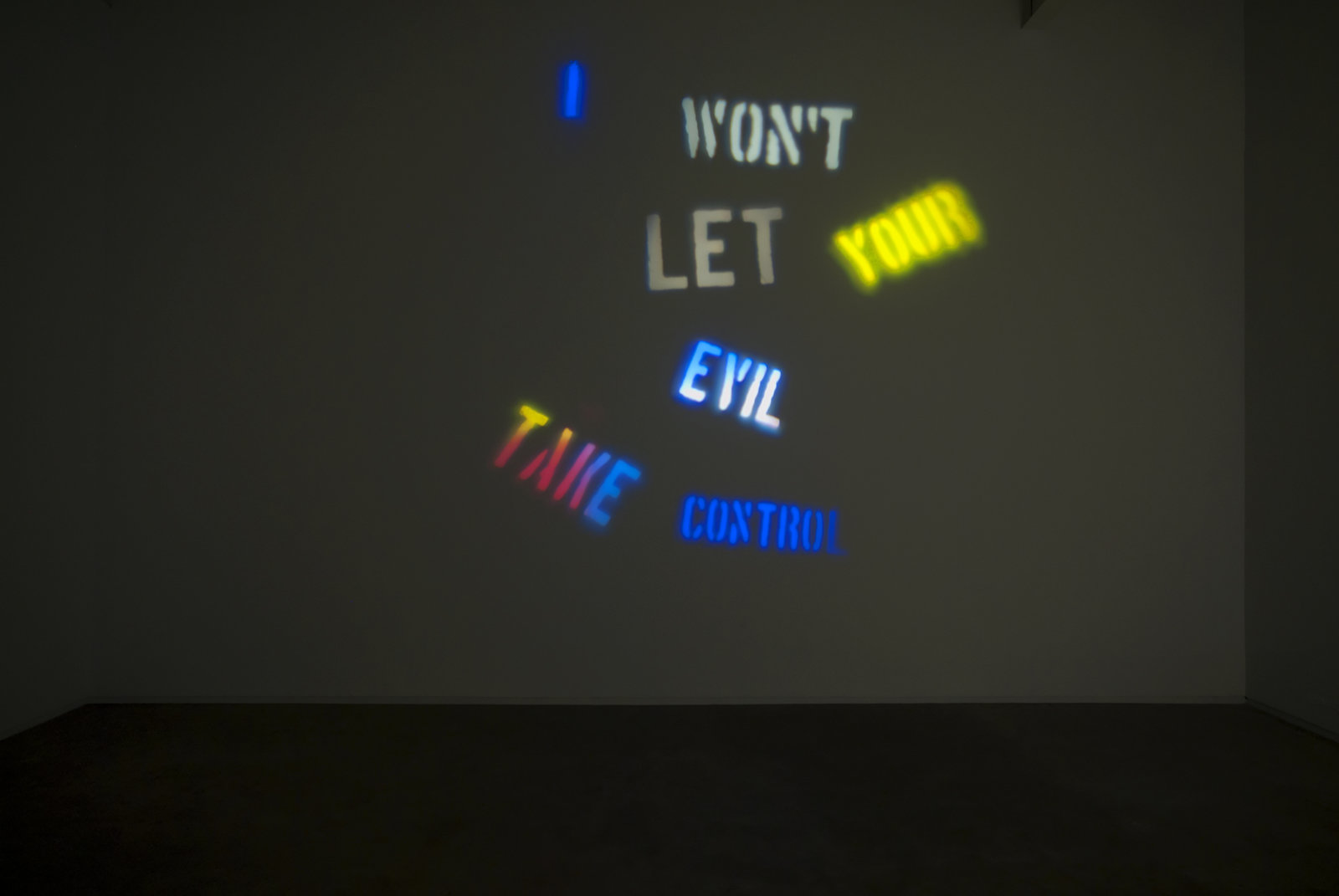Kevin Schmidt – SEPTEMBER 17–OCTOBER 23, 2010
Kevin Schmidt
September 17–October 23, 2010
Catriona Jeffries
Catriona Jeffries is pleased to announce the forthcoming exhibition of new work by Kevin Schmidt. In the gallery Schmidt presents an installation of four distinct bodies of work that continue his exploration into the production and critique of spectacle. The works seek to subjectively disassemble and complicate the authority and seamlessness of the spectacle of images, both still and moving, of entertainment display and the conventions of exhibition making. Traveling into the Arctic and along the local Fraser River, Schmidt’s epic expeditions investigate subjects whose critique lies within the constructed seduction of their delivery.
In the installation Angel of Light, Schmidt has altered a set of nightclub or concert effects lights by replacing the gobos; these lights, which previously directed abstract shapes and light, now sequentially project the lyrics of a song by Petra. One of the first and most successful Christian rock groups to emerge in the 1970s, their music emulates other stadium rock bands of the era. However, their message was resolutely a religious one, whereby their songs use the language, genre and style ascribed to the rebellious and reckless lifestyle that their songs condemn and warn against.
Taking on a similar timbre of warning, in the spring of this year Schmidt began production on a large sculpture – A Sign in the Northwest Passage – in the form of a cedar sign hand-routered with text from the Book of Revelations, the final and most explicitly apocalyptic document in the New Testament. The text describes the destruction of both the natural world and human life: seas turn into blood, humans are plagued with ugly and painful sores, ‘birds eat the flesh of all’. The sign was installed into the seasonal ice that forms and melts each year in the Northwest Passage beyond Tuktoyaktuk, a place complex both as site (a significant oil resource lies below) and landscape (a barren expanse of pure arctic panorama). Driving north from Vancouver, Schmidt met a small team of local guides to install the unanchored sign, which was designed and counter-balanced in such a way so as to float when the ice melted. The sign was left on site, to survive the spring melt, and then to drift with the wind and currents, quietly proselytizing the end of the world.
A large scale photograph of the sign in situ is accompanied by a photo book, which functions in a similar manner to the journals kept by sailors chronicling the first explorations into the Northwest Passage and later published for notoriety. These, in addition to a small series of watercolours painted by Schmidt as gifts to a number of people whose labor were essential to the making of project, function to represent the personal and social interactions that lead to the installation of the sign.
Akin to Schmidt’s voyage into the north, Epic Journey takes on the marathon Lord of the Rings trilogy via a series of nocturnal screenings down the Fraser River, in an attempt to record the entire screening over the period of one night. Setting out with two boats, one outfitted with a small screen and projector playing the trilogy, the second with a small camera crew, Schmidt filmed the boat ahead, the drama of the movie unfolding as the boats slowly drifted down the river. Tracking the projected image as it punctuated the passing landscape, the seamless narrative of Lord of the Rings and the demanding production of the video itself are all framed within the same shot, creating a mesmeric journey of its own construction.
Documentation by SITE Photography.
